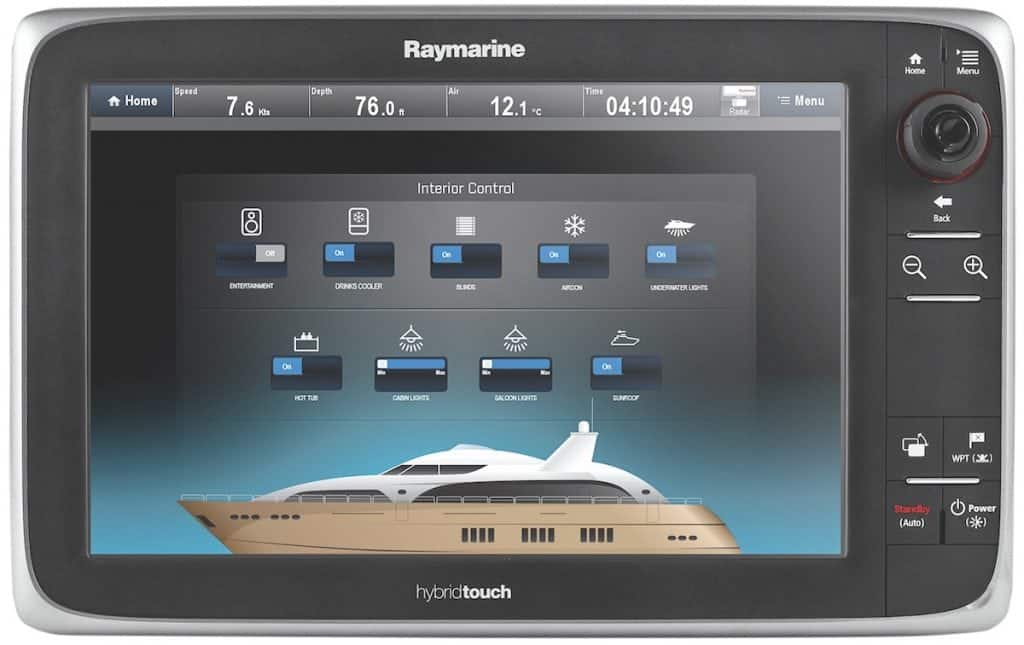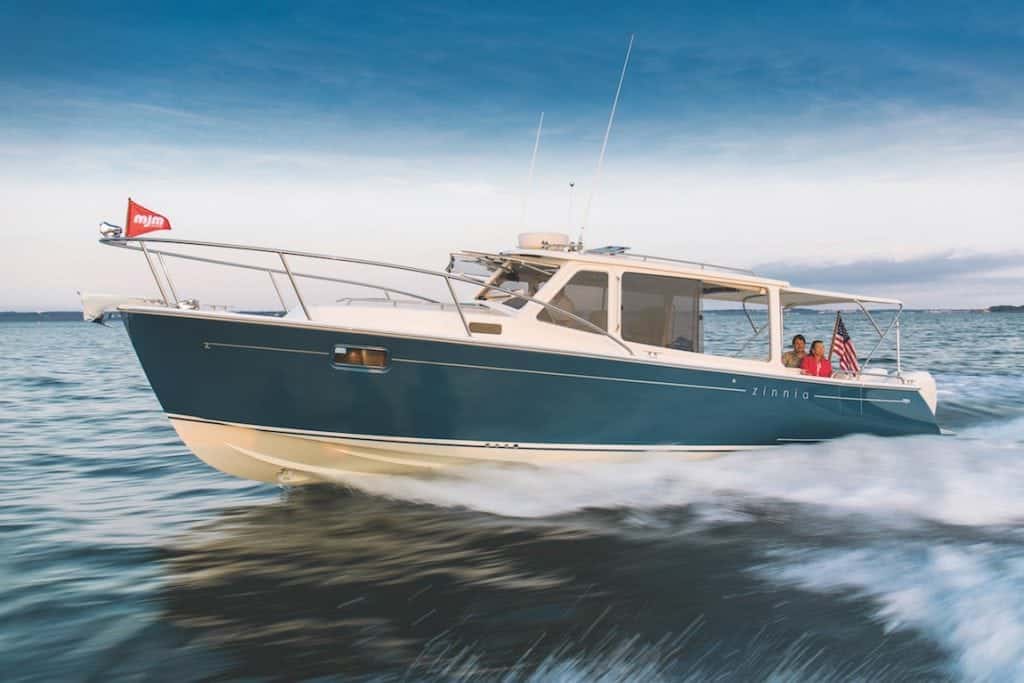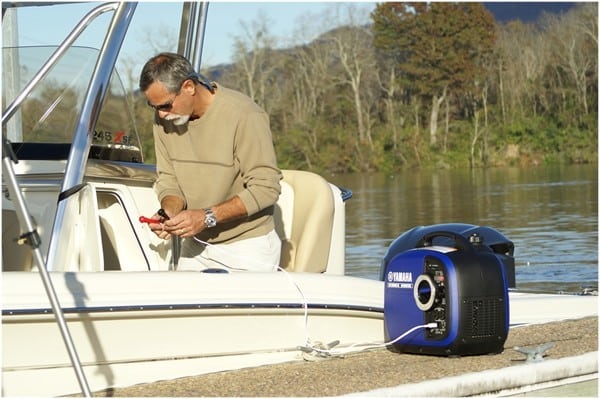Electronics industry standards, like the NMEA Standards, facilitate better connections — and communication.
Adding new electronics back in the day meant installing a spaghetti-like mess of multicolored wires between the equipment, power source and whatever remote sensor was involved (transducer, wind indicator, etc). Data sharing between equipment was essentially an electronic Tower of Babel, requiring a professional installer’s level of knowledge to connect different boxes.
Today, most any form of onboard information (from chartplotters to engine data) can be easily linked by most DIYers, allowing equipment to exchange, process and display each other’s data—thanks primarily to the vision and efforts of one group and the standards they developed.
NMEA 0183 and NMEA 2000
The National Marine Electronics Association (NMEA®) was founded by a group of electronics dealers at the New York Boat Show in 1957. The goal of that meeting was to discuss how to strengthen relationships with electronics manufacturers. It ended up producing the baseline of NMEA standards.
Fast forward to 1983, the year NMEA introduced NMEA 0183, a voluntary industry standard to facilitate data communications between different marine electronic products. NMEA 0183 uses ASCII, serial communications protocol that defines how data is transferred from one piece of gear or “talker” to one or more “listeners.” While groundbreaking at the time, it’s a pretty simple protocol compared to today’s measure and not without limitations.
Data transmission rates are slower and as it doesn’t allow for multiple “talkers,” it can’t be used to create networks. Despite these shortcomings, NMEA 0183 is still widely used and remains a perfectly acceptable way to integrate two sets of data, such as chartplotter GPS to a fixed mount VHF for DSC capabilities. Even so, NMEA 0183 has largely been supplanted by NMEA 2000, although many current devices can communicate using either protocol.
NMEA 2000
Today’s industry standard is NMEA 2000, a plug-and-play networking system for the marine industry that allows quick and easy installation of new equipment. NMEA 2000 (abbreviated to N2K) uses a compact binary message format (rather than the ASCII serial communications protocol used by NMEA 0183) and supports a disciplined multiple-talker, multiple-listener data network, allowing several units to simultaneously transmit and
receive data through a single, standardized cable.
Combined with multifunction displays, users can select and show any number of data outputs (navigation and engine control systems, for example) at any position. The results are easier planning and placement of electronic systems for boatbuilders during construction and owners installing aftermarket equipment.
As all N2K-compliant gear can communicate with each other, boat owners can now purchase and install equipment based on options and functionality they like, rather than manufacturer compatibility with existing devices. Not only can all N2K equipment exchange information, they do it around 52 times faster than with NMEA 0183 (250,000 bits per second versus 4,800 bits per second).
How it works
N2K is a bi-directional multitransmitter/multi-receiver instrument network that uses a single wire or “backbone” cable running the length of the vessel to interconnect electronic equipment. Sensors and displays are attached using a series of T-shaped connectors. A good analogy would be a power cable serving a string of homes along a rural highway.
Each home taps into that one cable as it passes by, rather than having individual lines leading back to the power plant. All electronics plug into the backbone cable using a standardized waterproof connector and a section of “drop cable” (the length of which can be adjusted as required).
Additional T-connectors can also be placed anywhere along the length of the backbone cable, greatly simplifying future installations and expansion of the system. It’s also easier to remove damaged equipment for repair or connect a laptop to the system for troubleshooting.
Connections are made using Controller Area Network Bus technology (CAN), the same protocol used in the automotive industry. CAN functionality is instantaneous and as the cable carries data, power and ground, power draw and installation hassles are reduced (thanks to universal cabling, color codes, connectors, and plugs). With N2K, the end result is a robust installation infrastructure that is not only neater and more efficient, but also less costly to set up, maintain and upgrade.
What’s next: Bluetooth and wireless connectivity
Bluetooth is a low-power, device-to-device wireless system that is used to connect electronics within a limited range of each other, usually 30 to 40 feet. Wi-Fi can also link devices, as well as allow you to network multiple gadgets via a local or wide-area network (LAN or WAN). It has a typical range of around 350 feet, although this can be increased with the use of booster antennas.
Bluetooth and wireless systems transmit radio waves at the 2.4 GHz frequency (same as your home phone wireless handset); however, one key difference between the two is bandwidth (the amount of data bits able to be streamed per second). The bandwidth for Bluetooth is 800,000 bits per second, compared with the 11 million bits per second for Wi-Fi.
Wi-Fi also brings the possibility of Internet access to the table (when connected to a suitable WAN), although the term Wi-Fi does not necessarily mean Internet connectivity when used to describe an integration between onboard marine electronics.
Many manufacturers use basic Wi-Fi technology to connect various components of the electronic suites they offer (multifunction displays being a good example) or remote control and display via other wireless equipment, such as tablets or phones. A major benefit here, of course, is the ability to interface an iPad or other such tablets (loaded with an appropriate app) and easily create a remote secondary station.
So, while N2K has revolutionized data and power cable installations, does wireless technology mean cable itself is poised to go the way of 8-track tapes? Physical connectivity is safe for the moment; however, it’s a sure bet we’ll continue to see advancements in wireless technology for marine electronics as well as evolving NMEA standards.
By Frank Lanier, Southern Boating
September 2017













